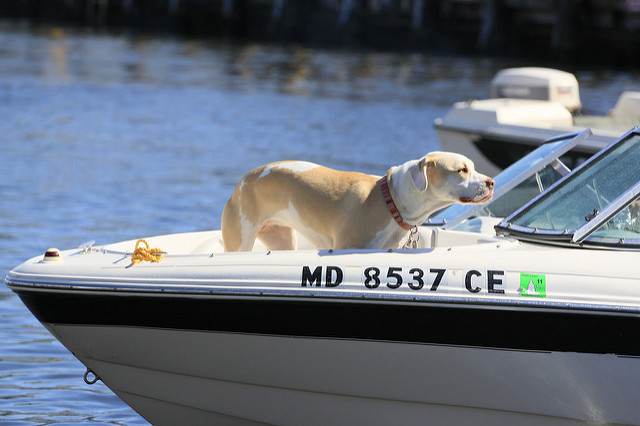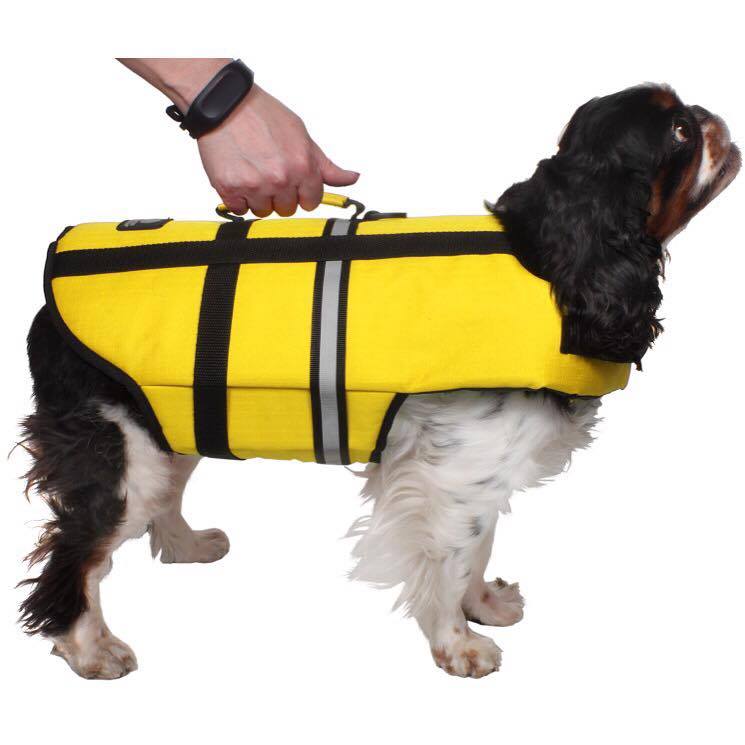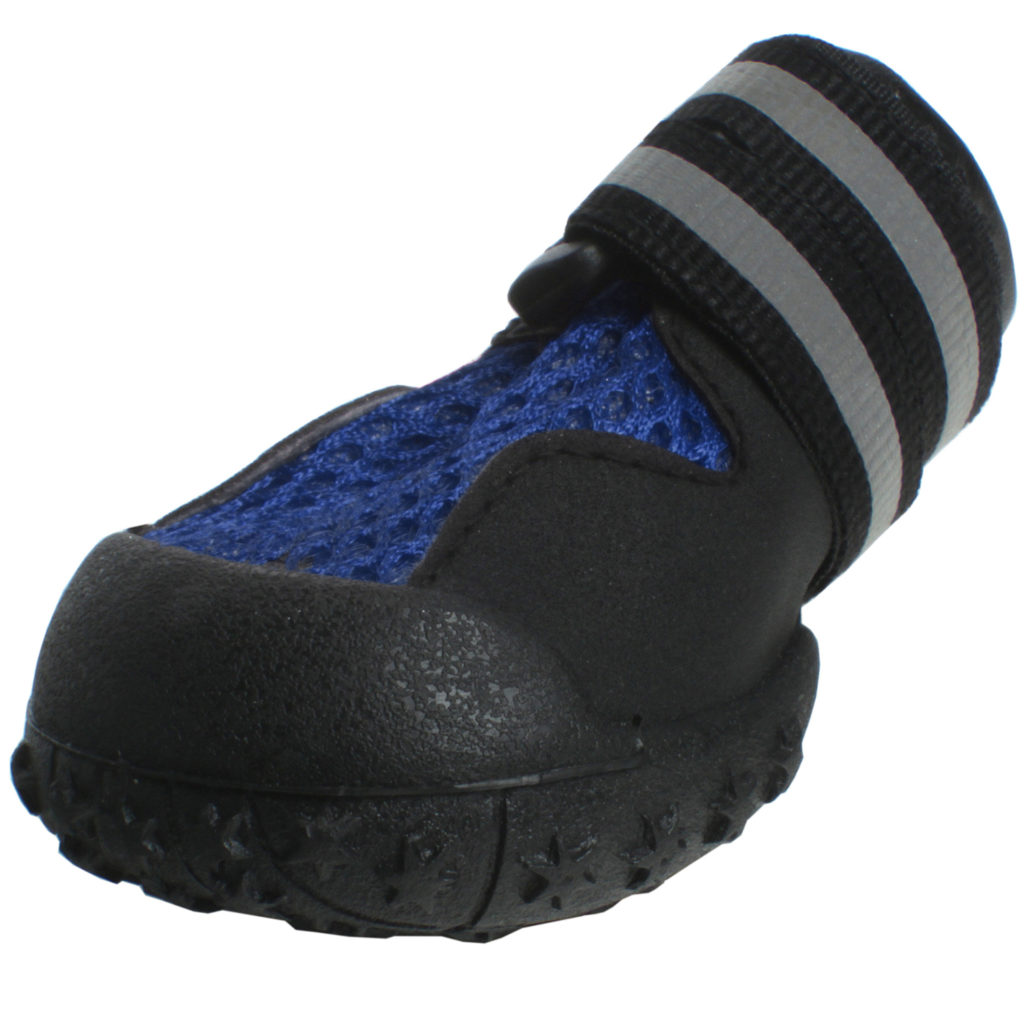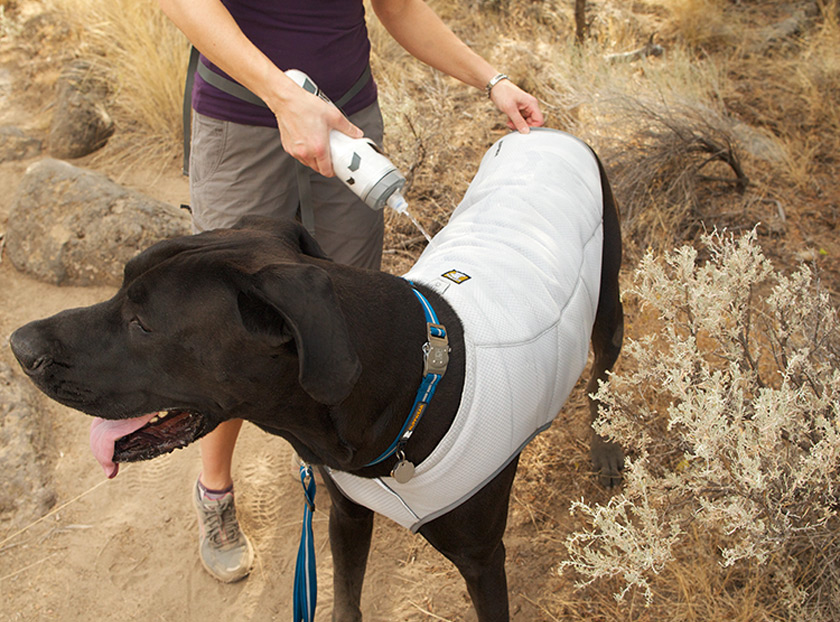As summer approaches, dog water safety is an important thing to consider, as dogs can drown in just minutes! Water activities can be a great source of fun for you and your canine; however before taking your pooch out for a paddle, preparing for the adventure is a must.
It is estimated that thousands of pets lose their lives in drowning accidents each year. A majority of these incidents could have been prevented if pet owners were more aware of what they could do to keep their pets safe while enjoying watercraft outings.

1. Swim lessons
Many people assume that swimming is a skill that all dogs naturally have. In reality, while most pups instinctively make a paddling movement once they are in the water, some dogs tend to sink when submerged.
Before heading out to the dock, invest in some dog swim lessons with a local trainer. This way, you can teach your dog to swim in a controlled environment and learn from an expert about proper life vest fit. They will also show you how to make water a positive experience for dogs that are a little hesitant.
2. The Right Gear
Next, you need to make sure your dog is outfitted for a day out on the water. The following items are musts for nautical pups.
Pet Personal Floatation Device
A good life vest will have quick release buckles, and, most importantly, a large nylon handle on the top of the vest to make it easier to snatch your dog out of the water. Have your dog wear the vest at home. This ensures that it fits correctly and it gives your dog time to get used to it. You don’t want him battling his life vest as he is trying to swim to safety.
The AKC Flotation Vest is a great option. This vest is available in two vibrant colors, orange and yellow. It retails for $29.99 and comes in sizes XS-XL.

I personally own the Ruff Wear K-9 Float Coat and really like how it works. It’s very durable and has lasted several seasons. It comes in red or yellow and in sizes XXS to -XL, retailing at $79.99.
Dog Boots
You may be thinking dog boots are just for winter, but there are many reasons to think about using them on your water outing. First, beaches and rocky shores can be full of dangerous things like broken glass that can harm your pup’s feet. Boat decks can be hot on the paws. In addition, they are wet and slippery – you don’t want your pup sliding around or even overboard! A good pair of dog boots with traction can help give your dog his sea legs.
AKC Paw Tech Dog Boots have a non-skid rubber sole, which helps to protect your pup from sliding.

Sunscreen
Dogs need sunscreen just like people! This is especially true if you have a light-skinned, short-hair dog. Epi-pet is the ONLY FDA compliant sunscreen for pets, so that’s the one I recommend. Ask your vet prior to use if your dog has skin conditions or allergies.
You can also cover your pup with a t-shirt or even a hat to help block some rays. Gold Paw Series makes the Sun Shield tee that has a UPF50 rating, which blocks 98% of the sun’s UV rays.
Finally, Ruff Wear makes the Swamp Cooler that uses natural evaporative cooling to keep your pup cool in warm weather.
3. Acclimate Your Dog Before Heading Out
People take their dogs on all types of watercraft – stand-up paddle boarding, kayaking, canoeing, and of course, sailing and motor boats. But this takes time and practice to get your dog used to the watercraft, especially something like a paddle board.

“This takes time and water knowledge,” Peter Kurki, Business Developer for Bennett Brothers Yachts at the Cape Fear Marina in Wilmington North Carolina, told iHeartDogs. “It is not recommended to purchase your vessel or watercraft on Monday and expect to have your dog comfortable to be on board by Wednesday. It may or may not happen. Some waterdog breeds can’t wait to get in, and others can’t wait to get off.”

Instead, you need to give your dog time to get used to the craft and the water.
Erin Askeland, Training Manager at Camp Bow Wow, North America’s largest pet care franchise, says to make sure your pet is used to the boat before you ever leave the dock. She recommends:
Before the big boating day, introduce Fido to the boat and allow him to become acquainted with it while it is still immobile. Next, start the boat’s engine. The loud noise will probably be unfamiliar to Fido and hearing it will help him adjust. Next, bring Fido onto the boat and take him on a short ride. So that Fido will begin associating his PDF (personal flotation device) with the boat, it is a good idea to have him practice swimming in it after the boat ride.
4. Keep ‘em Aboard
Dogs are not nautical by nature, so you need to help them stay on the boat at all times. You can do this by attaching a leash to your dog’s life vest and keeping him with you at all times, so you can be sure he is safe, should your boat pitch suddenly. If your dog panics, he is likely to try to jump overboard, so be there to secure him is the best way to keep him safe.
Kurki also recommends dogs be kept on a leash because many of them may try to go after wildlife while on board.
“There are stories of dogs jumping overboard to chase the wildlife while the owners continue into the sunset – only to miss the loved one when they return from the galley to refill the beverage,” Kurki said.

It’s always best to stay toward calmer waters when your pup is on board, away from speedboats and rough surf. Try to find a lifeguard to ask about current water conditions and scan the area for possible danger spots.
Don’t forget that when your dog goes overboard (whether on purpose or not) you will need a way to get him back on the boat. Since most dogs do not know how to climb ladders, be sure you have a pulley system in place or a ramp that you can drop in the water to get her back to safety easily.
5. Watch For Heat Exhaustion
Remember your dog has all that fur and may get hot long before you. Watch for the following symptoms that mean your dog had been in the sun too long:
- Excessive panting
- Collapsing or convulsing
- Bright red or blue gums
- Vomiting
- Diarrhea
- Excessive thirst
- Glazed Eyes
- Swollen, bright red tongue
- Staggering, stumbling
- Increased pulse or heartbeat
You can help prevent this by making sure you have a shady place on or below deck for your pup and lots of fresh water. Remember to not let your dog drink the water you are sailing on. Salt water can cause vomiting, diarrhea and dehydration. Fresh water can be full of parasites like Giardia that can make your dog sick, so bring water from home.
(Click here to read about the steps you should take if your dog does get affected by heatstroke.)

Want more information before you hit the water? Kurki says many of the cruising public love dogs and connect on forums. He recommends American Great Loopers and Cruisers of America (AGLCA) and The Salty Southeast Cruisers. Both give dog-friendly advice and share knowledge of where it’s best to go with your dogs.



 Toledo, United States.
Toledo, United States.
